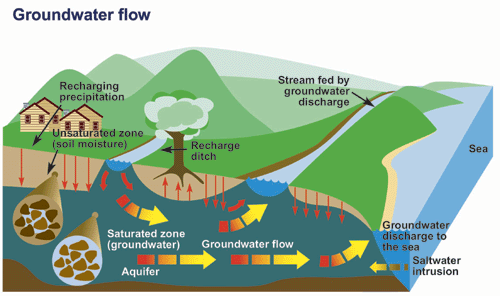Groundwater is the primary source of water for almost ten million Canadians. It is critical to human health, to important aspects of the economy, and to the viability of many ecosystems.
With the interests of Canadians in mind, the Canadian Council of Ministers of the Environment (CCME) has developed and tested an approach for assessing the sustainability of groundwater resources at a local, regional or Canada-wide scale. The resulting Groundwater Sustainability Assessment Approach (GSAA), is a high-level framework that can be interpreted for application across various scales, locations and circumstances.
To support the use of the GSAA, CCME has developed a guidance document that is meant to assist users to successfully apply the GSAA. The document noted that “groundwater sustainability assessment initiatives can be complex and are often thought to be resource-intensive, both in terms of human and financial resources.” The document also stated that “good planning may prevent such projects from becoming resource-intensive. Hence, the intent of the new reports is to provide advice on ways to standardize and improve jurisdictional groundwater assessment projects. It suggests measures to as conducting assessments in tandem with projects already funded through existing programs such as aquifer mapping or regional monitoring.
The guidance document is founded on principles that were defined by the Canadian Council of Academies in 2009, led by chair James P. Bruce, and an expert panel that included the late Steven Renzetti, Paul Muldoon, and Linda Nowlan.
The CCA report defined five goals for sustainable groundwater management as follows:
1. Protection of groundwater supplies from depletion (groundwater quantity)
2. Protection of groundwater quality from contamination (groundwater quality)
3. Protection of ecosystem viability (ecosystems)
4. Achievement of economic and social wellbeing (socioeconomic)
5. Application of good governance (governance)
The conceptual framework for the assessments is based on the The Driving-Force-Pressure-State-Impact-Response Conceptual Model Framework (DPSIR Framework), an internationally recognized systems analysis approach used for developing and reporting environmental indicators that has been broadly used by Environment Canada.

GSAA. This is why they are called “components” and not “steps” as the latter would imply a
linear sequence, whereas some components such as stakeholder engagement should be present
all along the process. In addition, the process can be iterative as the implementation of a
component may lead to repeating the previous component before moving to the next one in
certain cases. Source: CCME.
The documents provided by the CCME are as follows:
Groundwater Sustainability Assessment Approach: Guidance for Application (2017)
Sustainable Groundwater Management: Preliminary Approach for Assessing the Sustainability of Groundwater (2017)
Assessment Report Analysis of Groundwater Pilot Projects (2017)
For more information visit the CCME groundwater page at http://www.ccme.ca/en/resources/water/groundwater.html.









